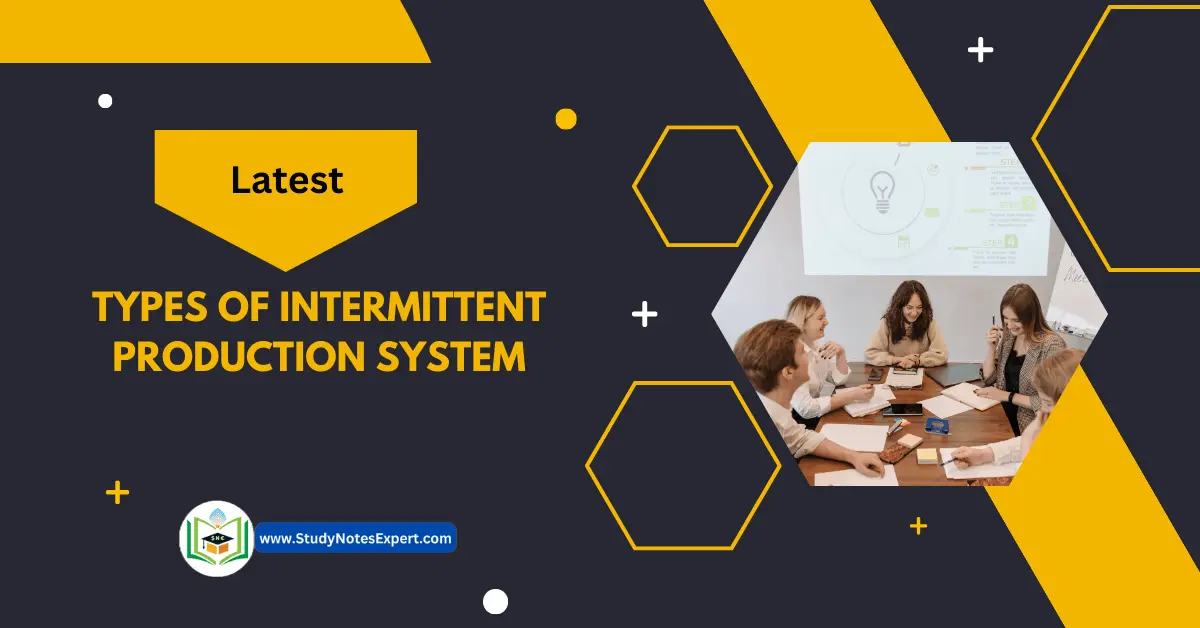Intermittent production systems are production strategies in which items are produced in batches or lots, with intermittent periods of production accompanied by intervals of no production or changeover. These systems are characterized by flexibility, as they can handle several products and accommodate modifications in production requirements.
Various Types of Intermittent Production System
Following are the types of intermittent production systems:
1) Job-based/Job Shop Production
2) Batch Production
3) Project
Job-Based/Job Shop Production
Job production includes handling the complete venture with a single employee or a group of employees. It is one of the important types of intermittent production system. Some examples of job methods are as follows:
1) A hairdresser who cuts, washes, dyes, and perms his customers’ hair.</p
2) A tailor who cuts and stitches the whole dress.
3) Construction of a bridge by a crew of engineers, overseers, managers, and laborers.
4) Equipment installation in a factory by a group of engineers, managers, and laborers.
5) Ship-building via a team of engineers, managers, and laborers.
The above examples of varied duties are associated with the application of technology, either lower or higher. Under this production, the products are synthetic, strictly according to the customer’s details.
The whole production equipment is engaged in the execution of that particular order. For example, in a printing press, at any given time, several obligations are executed concurrently to perform the specific order in hand. When that order is completed, the press is reset to undertake the next unique order. In the meantime, the remaining tasks about the previous order, like folding, keeping in order, stapling, trimming, packaging, and transporting the product, are completed. There are other different types of intermittent production system.
There is a department of labor for every work area of the process shop, and each one does its undertaking at a suitable time. The key challenge in a job keep is scheduling and sequencing the work in this way that the cost of the idle time and the price of getting jobs ready are optimally balanced.
Characteristics of Job-Based Production
The characteristics of job based production are as follows:
1) Various general-purpose machines, e.g., grinders, drill presses, sharpeners, and many others, are used.
2) Only customized or made to reserve merchandise is synthetic.
3) Output degree is generally low.
4) Fixed-position layout is used to arrange the machines and equipment, i.e., assembled at one location.
Advantages of Job-Based Production
The following are the blessings of job-based production:
1) Use of general-purpose machines and equipment which facilitates the production of a wide range of merchandise.
2) Each job provides a learning opportunity to employees and operators, and the level of their competencies and capabilities is taken to a better degree.
3) Optimal usage of operators’ capability is ensured.
4) There is sufficient scope for creativity and innovation.
Disadvantages of Job-Based Production
The following are the disadvantages of job based production:
1) Set-up needs to be changed in a common manner, which ends up in higher costs.
2) Inventory degree needs to be kept at a better degree at all of the ranges of production, which ends inventory value.
3) Production-making plans are complex and wish to be undertaken meticulously.
4) Spacious premises are required for activity production.
Measures Taken for Tackling Problems of Job Production
With job production, the complete mission is treated with the aid of a single worker or body of workers. Jobs can be small-scale/low technology in addition to complicated/excessive technology for tackling the problems that are as follows:
1) Low Technology Jobs
Here, the production agency is extremely simple, with the desired capabilities and equipment without difficulty obtainable. This method permits the client’s specific necessities to be included, often because the task progresses. Examples include – hairdressers and tailoring.
2) High Technology Jobs
These jobs contain much more complexity and give more control missions. Assignment management, or mission control, is an important element in excessive-era job production. The essential features of desirable project control for a job are:
i) Clear Definitions of Objectives: How has the process progressed (milestones, dates, degrees)?
ii) Decision-Making Process: How are decisions taking approximately the desires of every method inside the task, labor, and other sources.

